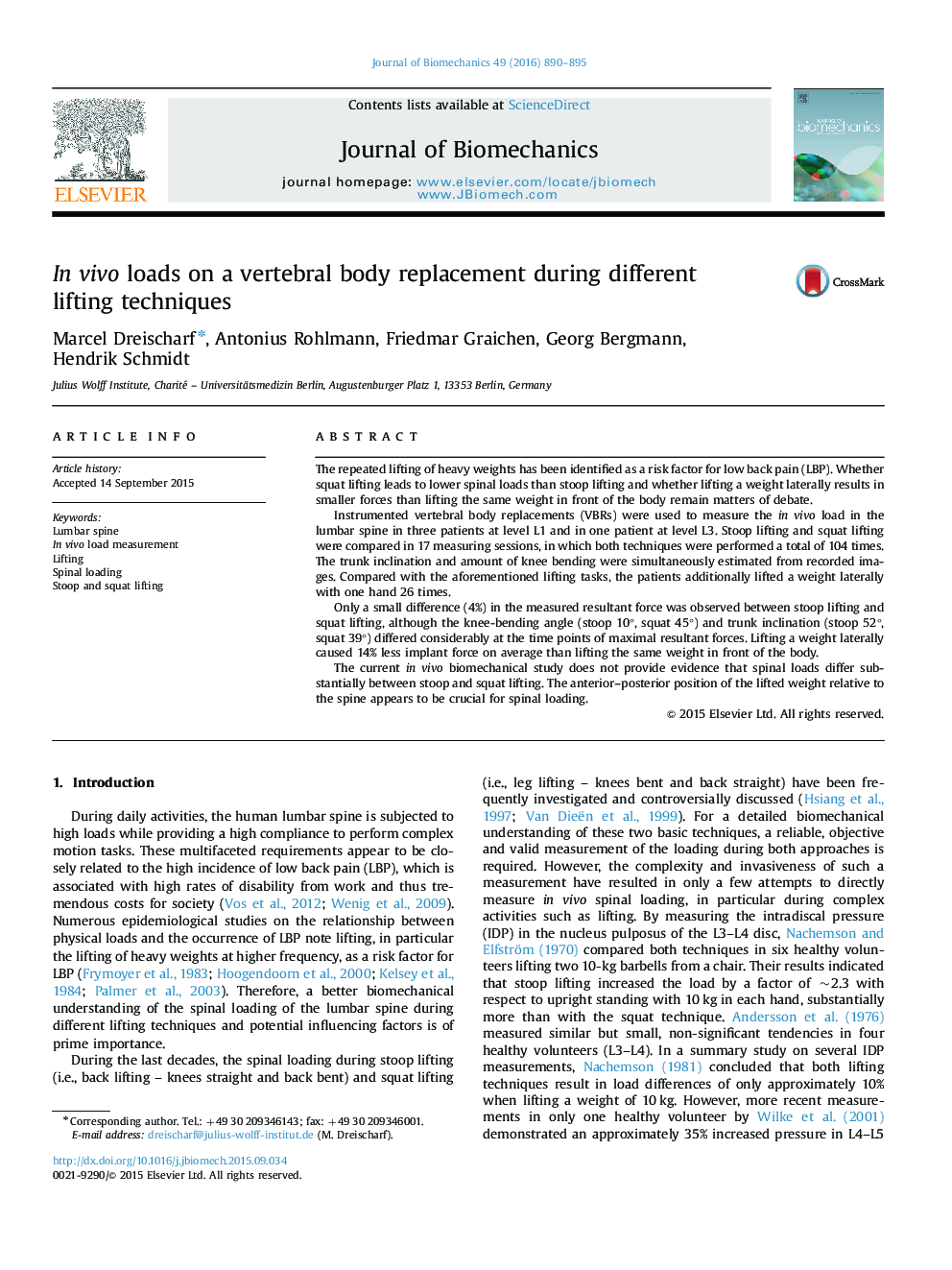| Article ID | Journal | Published Year | Pages | File Type |
|---|---|---|---|---|
| 871760 | Journal of Biomechanics | 2016 | 6 Pages |
The repeated lifting of heavy weights has been identified as a risk factor for low back pain (LBP). Whether squat lifting leads to lower spinal loads than stoop lifting and whether lifting a weight laterally results in smaller forces than lifting the same weight in front of the body remain matters of debate.Instrumented vertebral body replacements (VBRs) were used to measure the in vivo load in the lumbar spine in three patients at level L1 and in one patient at level L3. Stoop lifting and squat lifting were compared in 17 measuring sessions, in which both techniques were performed a total of 104 times. The trunk inclination and amount of knee bending were simultaneously estimated from recorded images. Compared with the aforementioned lifting tasks, the patients additionally lifted a weight laterally with one hand 26 times.Only a small difference (4%) in the measured resultant force was observed between stoop lifting and squat lifting, although the knee-bending angle (stoop 10°, squat 45°) and trunk inclination (stoop 52°, squat 39°) differed considerably at the time points of maximal resultant forces. Lifting a weight laterally caused 14% less implant force on average than lifting the same weight in front of the body.The current in vivo biomechanical study does not provide evidence that spinal loads differ substantially between stoop and squat lifting. The anterior–posterior position of the lifted weight relative to the spine appears to be crucial for spinal loading.
